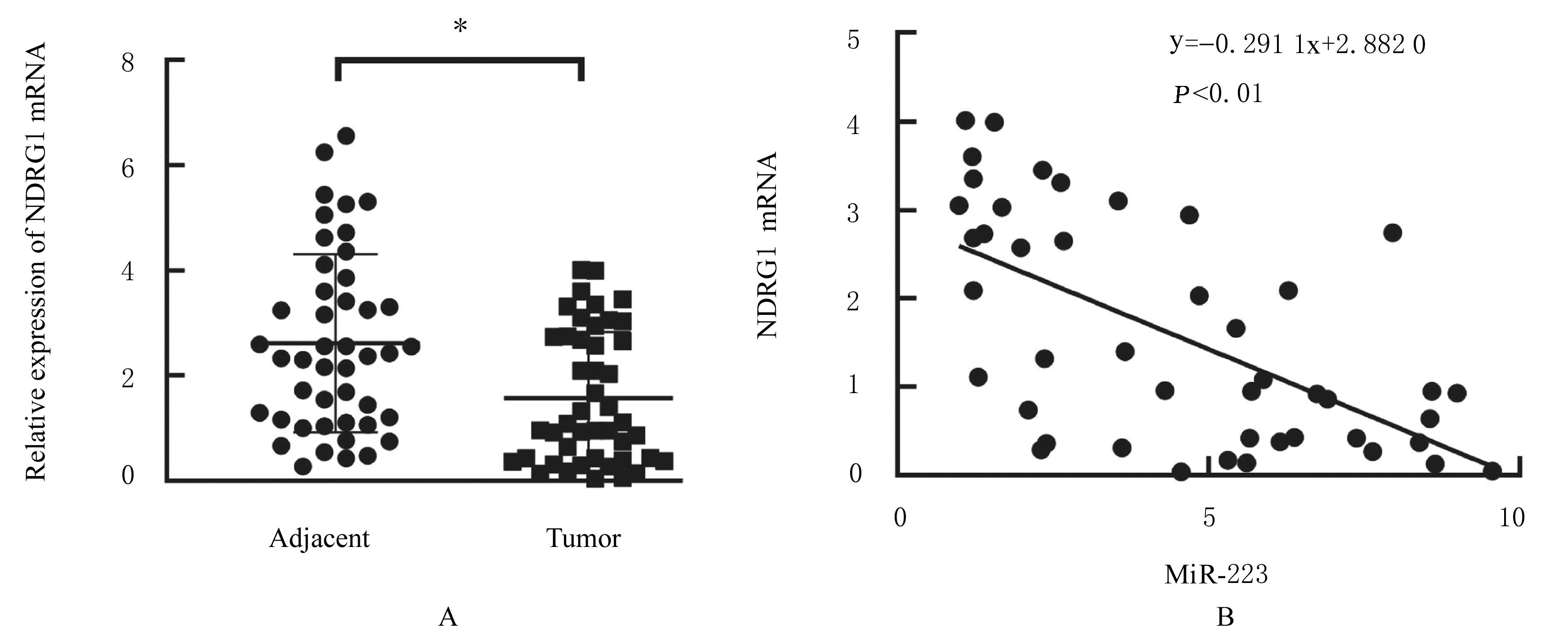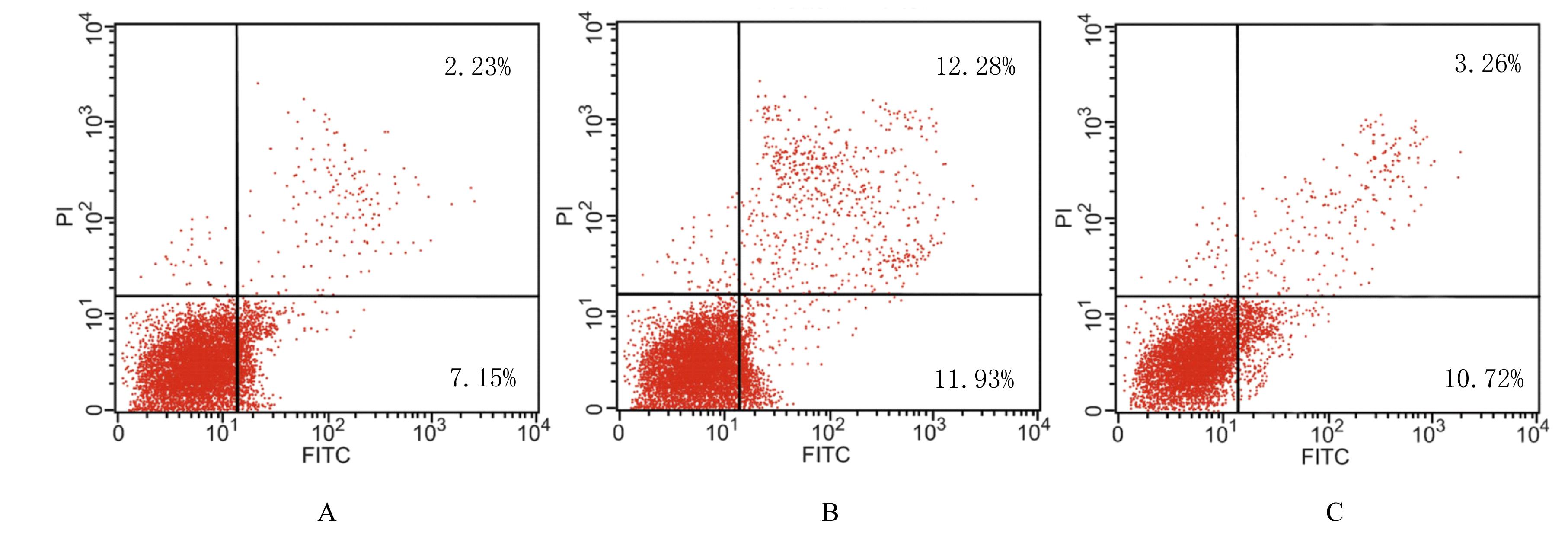| 1 |
SIEGEL R L, MILLER K D, JEMAL A. Cancer statistics, 2017[J]. CA Cancer J Clin, 2017, 67(1): 7-30.
|
| 2 |
ARTS F A, KEOGH L, SMYTH P, et al. miR-223 potentially targets SWI/SNF complex protein SMARCD1 in atypical proliferative serous tumor and high-grade ovarian serous carcinoma[J]. Hum Pathol, 2017, 70: 98-104.
|
| 3 |
ARTS F A, KEOGH L, SMYTH P, et al. MiR-223 potentially targets SWI/SNF complex protein SMARCD1 in atypical proliferative serous tumor and high-grade ovarian serous carcinoma[J]. Hum Pathol, 2017, 70: 98-104.
|
| 4 |
ZHU X L, SHEN H L, YIN X M, et al. Macrophages derived exosomes deliver miR-223 to epithelial ovarian cancer cells to elicit a chemoresistant phenotype[J]. J Exp Clin Cancer Res, 2019, 38(1): 81.
|
| 5 |
LIM S C, GELETA B, MALEKI S, et al. The metastasis suppressor NDRG1 directly regulates androgen receptor signaling in prostate cancer[J]. J Biol Chem, 2021, 297(6): 101414.
|
| 6 |
QUAN Y J, ZHANG X D, BUTLER W, et al. The role of N-cadherin/c-Jun/NDRG1 axis in the progression of prostate cancer[J]. Int J Biol Sci, 2021, 17(13): 3288-3304.
|
| 7 |
WANG J Y, LV W Z, LIN Z D, et al. Hsa_circ_0003159 inhibits gastric cancer progression by regulating miR-223-3p/NDRG1 axis[J]. Cancer Cell Int, 2020, 20: 57.
|
| 8 |
GIANNOPOULOU L, ZAVRIDOU M, KASIMIR-BAUER S, et al. Liquid biopsy in ovarian cancer: the potential of circulating miRNAs and exosomes[J]. Transl Res, 2019, 205: 77-91.
|
| 9 |
YANG L, MA H L. MiRNA-584 suppresses the progression of ovarian cancer by negatively regulating LPIN1[J]. Eur Rev Med Pharmacol Sci, 2020, 24(3): 1062-1071.
|
| 10 |
YANG N, ZHANG Q, BI X J. MiRNA-96 accelerates the malignant progression of ovarian cancer via targeting FOXO3a[J]. Eur Rev Med Pharmacol Sci, 2020, 24(1): 65-73.
|
| 11 |
DUNAEVA M, BLOM J, THURLINGS R, et al. Circulating serum miR-223-3p and miR-16-5p as possible biomarkers of early rheumatoid arthritis[J]. Clin Exp Immunol, 2018, 193(3): 376-385.
|
| 12 |
WU Z M, LUO J, SHI X D, et al. Icariin alleviates rheumatoid arthritis via regulating miR-223-3p/NLRP3 signalling axis[J]. Autoimmunity,2020,53(8): 450-458.
|
| 13 |
ROFFEL M P, BRACKE K R, HEIJINK I H, et al. miR-223: a key regulator in the innate immune response in asthma and COPD[J]. Front Med (Lausanne), 2020, 7: 196.
|
| 14 |
ZHANG D, LEE H, WANG X Y, et al. A potential role of microvesicle-containing miR-223/142 in lung inflammation[J]. Thorax, 2019, 74(9): 865-874.
|
| 15 |
DING Q P, SHEN L, NIE X H, et al. miR-223-3p overexpression inhibits cell proliferation and migration by regulating inflammation-associated cytokines in glioblastomas[J]. Pathol Res Pract, 2018, 214(9): 1330-1339.
|
| 16 |
XIAO W, WANG X G, WANG T, et al. miR-223-3p promotes cell proliferation and metastasis by downregulating SLC4A4 in clear cell renal cell carcinoma[J].Aging (Albany NY),2019,11(2): 615-633.
|
| 17 |
YANG Z P, LU S, WANG Y Y, et al. A novel defined necroptosis-related miRNAs signature for predicting the prognosis of colon cancer[J]. Int J Gen Med, 2022, 15: 555-565.
|
| 18 |
JIN X L, QIU X, HUANG Y, et al. miR-223-3p carried by cancer-associated fibroblast microvesicles targets SORBS1 to modulate the progression of gastric cancer[J]. Cancer Cell Int, 2022, 22(1): 96.
|
| 19 |
CHANG X J, XU X Y, XUE X Y, et al. NDRG1 controls gastric cancer migration and invasion through regulating MMP-9[J]. Pathol Oncol Res, 2016, 22(4): 789-796.
|
| 20 |
NAKAHARA Y, ITO H, NAMIKAWA H, et al. A tumor suppressor gene, N-myc downstream-regulated gene 1 (NDRG1), in gliomas and glioblastomas[J]. Brain Sci, 2022, 12(4): 473.
|
| 21 |
PARK K C, PALUNCIC J, KOVACEVIC Z, et al. Pharmacological targeting and the diverse functions of the metastasis suppressor, NDRG1, in cancer[J]. Free Radic Biol Med, 2020, 157: 154-175.
|
| 22 |
GELETA B, TOUT F S, LIM S C, et al. Targeting Wnt/tenascin C-mediated cross talk between pancreatic cancer cells and stellate cells via activation of the metastasis suppressor NDRG1[J]. J Biol Chem, 2022, 298(3): 101608.
|
| 23 |
QUAN Y J, CUI Y, WAHAFU W, et al. MLL5α activates AR/NDRG1 signaling to suppress prostate cancer progression[J]. Am J Cancer Res, 2020, 10(5): 1608-1629.
|
| 24 |
DE LIMA J M, MORAND G B, MACEDO C C S,et al.NDRG1 deficiency is associated with regional metastasis in oral cancer by inducing epithelial-mesenchymal transition[J].Carcinogenesis,2020,41(6): 769-777.
|
 )
)















